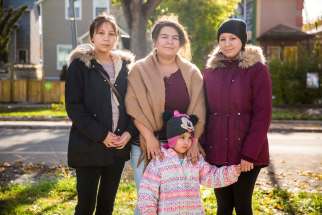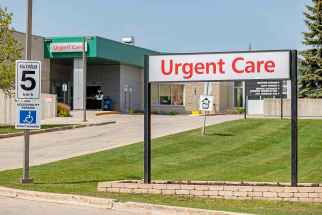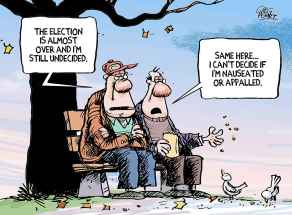A year of legal cannabis in Canada, by the numbers Tallying up 12 months of legal cannabis
Read this article for free:
or
Already have an account? Log in here »
To continue reading, please subscribe:
Monthly Digital Subscription
$0 for the first 4 weeks*
- Enjoy unlimited reading on winnipegfreepress.com
- Read the E-Edition, our digital replica newspaper
- Access News Break, our award-winning app
- Play interactive puzzles
*No charge for 4 weeks then price increases to the regular rate of $19.00 plus GST every four weeks. Offer available to new and qualified returning subscribers only. Cancel any time.
Monthly Digital Subscription
$4.75/week*
- Enjoy unlimited reading on winnipegfreepress.com
- Read the E-Edition, our digital replica newspaper
- Access News Break, our award-winning app
- Play interactive puzzles
*Billed as $19 plus GST every four weeks. Cancel any time.
To continue reading, please subscribe:
Add Free Press access to your Brandon Sun subscription for only an additional
$1 for the first 4 weeks*
*Your next subscription payment will increase by $1.00 and you will be charged $16.99 plus GST for four weeks. After four weeks, your payment will increase to $23.99 plus GST every four weeks.
Read unlimited articles for free today:
or
Already have an account? Log in here »
Hey there, time traveller!
This article was published 17/10/2019 (2246 days ago), so information in it may no longer be current.
It’s been 365 days since Canada legalized and regulated non-medical cannabis on Oct. 17, 2018. Here’s a by-the-numbers look at what’s happened since then.
Online sales of legal cannabis are available in all of Canada’s 10 provinces and three territories, but it’s bricks-and-mortar storefronts that appear to be the driving force behind weed sales. Not all Canadians have equal access to those physical weed stores, though, since different provincial cannabis policies have led to an uneven rollout of stores over the year.
Alberta is the national provincial leader in terms of cannabis store access, having issued 306 licences for stores to serve a population of nearly 4.4 million people. Newfoundland, with 25 licensed stores, has the next-best ratio of licences to population, and Saskatchewan comes in third with 39 licences. British Columbia ranks fourth in the ratio of licences to population, although many of those stores haven’t actually opened yet.
Canada’s two most populous provinces sit at the bottom of the licence-to-population rankings: Quebec has just 22 licensed stores serving nearly 8.5 million people, followed by Ontario, which, after a year, has only issued 24 licences to serve nearly 14.6 million Ontarians.
Monthly retail sales of government-regulated weed from those licensed stores, and online, have grown from $41.5 million in October to $104.5 million this past July, according to Statistics Canada. The national data agency also reports that federal, provincial and territorial governments earned a combined $186 million in cannabis excise tax and sales taxes from legal cannabis sales during the first five-and-a-half months of legalization.
Official government cannabis statistics related to cannabis are still catching up to the past few months. Health Canada’s latest available data shows that licensed cannabis producers have increased their monthly production of packaged and labelled dried cannabis between October 2018 (13,830 kilograms of finished production) and June 2019 (29,098 kilograms of finished production).
But monthly unfinished production — dried cannabis not packaged or labelled for sale — has increased at a faster clip, from 41,677 kilograms last October to 120,630 kilograms during the month of June.
“There’s been a consistent delay, looking at the numbers, in terms of getting that unfinished stuff turned into finished product,” says Brock University business professor Michael Armstrong.
“And part of that could just be processing problems, bottlenecks in the factory, and I think that was true last fall, maybe through the winter. But since it’s persisted, I think part of it might be product that is just not good enough quality, so it’s going to eventually get turned into oil… In which case it will get used in oil products or in edible products, foods and beverages.”
Other stockpiled unfinished cannabis might simply get destroyed by producers and written off, Armstrong believes.
In the first half of 2019, Statistics Canada estimates 5,098,200 Canadians aged 15 and older used cannabis at least once in the preceding three-month period. That’s 16.8 per cent of the total Canadian population aged 15 and older. Cannabis-use rates in the first six months of the year were highest among the 15 to 24 age group (27.4 per cent) and dropped for subsequent age groups (24.2 per cent for those aged 25 to 44, 12.2 per cent for those aged 45 to 64, and five per cent for the 65-plus demographic). Males continue to be more likely to report cannabis use (21.2 per cent) than females (12.4 per cent).
Measuring average cannabis prices is tricky for the legal market and even more difficult for the black market, but Statistics Canada is trying to capture that data in real-time with an online crowdsourcing tool that allows Canadians to anonymously share price data from their latest legal or illegal cannabis purchase.
The latest release of that data puts the average price of black market cannabis at $5.59 per gram in the third quarter of 2019, compared to $10.23 per gram for legal cannabis. Legal cannabis prices declined between the second and third quarters, Statistics Canada said.
On Wednesday, a major cannabis producer said it’s aiming to undercut black-market prices with a new legal offering that will cost $4.49 per gram.
As of Oct. 11, the federal government’s expedited pardons process for previous convictions of cannabis possession has ordered pardons for 74 cases out of 156 applications received, according to data from the Parole Board of Canada. Sixty-four applications were returned to the applicant for being incomplete or ineligible, and two were discontinued for other reasons.
Three new classes of cannabis — edible cannabis, cannabis extracts and cannabis topicals — will become legal to sell as of Oct. 17, 2019, but they won’t actually be for sale on that date. Producers must give Health Canada written notice of their new cannabis products before they’re approved for sale, a process that the regulator says will take a minimum of 60 days. For that reason, no new cannabis products will actually be available to provincial distributors until mid-December at the absolute earliest.
solomon.israel@theleafnews.com
@sol_israel















